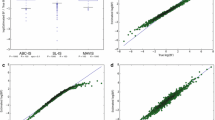Abstract
An extension of probabilistic PERT/CPM is proposed as a framework for soliciting expert opinion to characterize random variables for stochastic treatment in simulation models. By eliciting minimum, modal, ninetieth percentile, and maximum estimates, the distribution of variables with probability density functions of beta form can be explicitly characterized without relying on the traditional, but empirically unverified, assumption of a standard deviation equal to one-sixth of the range. This practical and inexpensive technique is illustrated by application to a wildfire protection planning problem – estimating the time required to produce a given length of fireline by different firefighting resources under diverse conditions. The estimated production times are an essential input to a planning model of initial attack on wildland fires used by the California Department of Forestry and Fire Protection, and provide that agency with useful “rules-of-thumb” for use in firefighter training.
Similar content being viewed by others
References
J.S. Fried and J.K. Gilless, Modification of an initial attack simulation model to include stochastic components, in: Proceedings of the 1988 Symposium on Systems Analysis in Forest Resources, Asilomar Conference Center, Pacific Grove, CA (March 19-April 1, 1988) pp. 235–240; General Technical Report RM-161, Rocky Mountain Forest and Range Experiment Station, Fort Collins, CO, p. 278.
J.S. Fried and J.K. Gilless, CFES2: The California Fire Economics Simulator Version 2, User's Guide, University of California Agricultural Experiment Station Publication 21580 (1999).
J.S. Fried and J.K. Gilless, Expert opinion estimation of fireline production rates, Forest Science 35(3) (1989) 870–877.
L. Haven, T.P. Hunter and T.G. Storey, Production rates for crews using hand tools on firelines, General Technical Report PSW-62, Pacific Southwest Forest and Range Experiment Station, Berkeley, CA (1982) p. 8.
K.G. Hirsch and D.L. Martell, A review of initial attack fire crew productivity and effectiveness, International Journal of Wildland Fire 6(4) (1996) 199–215.
D.L. Martell, A review of operational research studies in forest fire management, Canadian Journal of Forest Research 12 (1982) 119–140.
J.J. Moder, C.R. Phillips and E.W. Davis, Project Management with CPM, PERT and Precedence Diagramming (Van Nostrand Reinhold, New York, 1983) p. 389.
J.J. Moder and E.G. Rodgers, Judgement estimates of the moments of PERT type distributions, Management Science 15(2) (1968) B76–B83.
C.B. Phillips, C.W. George and D.K. Nelson, Bulldozer fireline production rates - 1988 Update, Research Paper INT-392, U.S.D.A. Intermountain Experiment Station, Ogden, UT (1988) p. 13.
C. Wilson, Determining production rates for fire engines and their crews, 1978-1979, Unpublished manuscript, California Department of Forestry, Sacramento, CA (1980) p. 16.
U.S. Forest Service, National fire management analysis system users' guide of the initial action assessment model (FPL-IAA2.2), U.S.D.A. Forest Service, Washington, DC (1985).
Author information
Authors and Affiliations
Rights and permissions
About this article
Cite this article
Gilless, J.K., Fried, J.S. Generating beta random rate variables from probabilistic estimates of fireline production times. Annals of Operations Research 95, 205–215 (2000). https://doi.org/10.1023/A:1018945906565
Issue Date:
DOI: https://doi.org/10.1023/A:1018945906565




